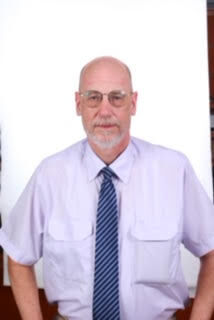Wisdom
3 Ways to Make Academic Writing Shine
Dr. Hal Swindall offers wisdom from his academic writing workshops.
Posted November 1, 2021 Reviewed by Michelle Quirk
Key points
- Syntax is a major challenge for many writers to conquer.
- Properly structuring paragraphs, starting with a topic sentence, is a vital skill for writers.
- Overall cohesion in a piece of writing helps make it shine.

Just as a prospective surgeon might study medicine with aplomb only to learn that academic prowess doesn’t necessarily translate to success with a scalpel, researchers often learn that their success in conducting a study doesn’t necessarily translate to a well-written account of their findings. Yet, not being able to convey important knowledge in an effective way hamstrings the findings’ value.
Fortunately, there is help. I first became acquainted with Hal Swindall, Ph.D., when he was Mensa World Journal’s official books reviewer. Dr. Swindall, a professor who teaches academic writing workshops, agreed to lend us his wisdom. I had the pleasure of interviewing Dr. Swindall on ways our academic readers and writers can produce the best accounts of their research.
Jenny Rankin (JR): What is the first of your top ways to make academic writing shine?
Hal Swindall (HS): The first and foremost way to make any kind of writing shine is syntax. This is the area where most native and nonnative speakers of a language face the biggest challenge, since writing is the last and most difficult skill anyone learns in their native or second language. My solution is practice with basic compound and complex sentences while receiving feedback from an instructor who knows what they are doing.
JR: The impact of writing’s place in language development makes a lot of sense. What is the second way?
The second way to make writing shine is paragraphing. It is another very basic skill, but not enough students master it, even at advanced degree level. Remember that Western rhetoric proceeds in a general-to-specific pattern in a straight line to a logical conclusion; this is the case from paragraph to book level. Therefore, begin a paragraph with a topic sentence stating what the paragraph is about and probably your argument about the topic. The middle of a paragraph is the body consisting of sentences with evidence supporting the topic sentence. Then there can be a concluding sentence stating the implications of the paragraph for the reader, which may also serve as a lead-in to the next paragraph's topic sentence.
JR: I love that you provide a paragraph formula; that’s something academic writers can refer to as they plan, write, and revise. What about your third top way to make academic writing shine?
Third is overall cohesion in a paper or chapter or book, meaning that there is a linear, logical pattern of argument from beginning to end with the evidence set forth systematically. I know that English writing courses usually proceed from overall level to syntax, but I start with sentence construction.
JR: I really like your approach. What writing pitfall do you see academics fall into most frequently?
HS: The greatest pitfall for writers of any kind lies in syntax and cohesion: each sentence must not only be grammatically correct, it must also fit into the overall argument to form a logical pattern with the other sentences. I repeat the basic freshman English rule that a paragraph possesses unity and cohesion, meaning all its sentences are on the same topic stated in the topic sentence and all fit together in a logical pattern to form a systematic argument. Such consistency is harder to achieve in longer texts such as articles, so at least have a competent friend read your text; better still, pay a professional academic editor.
JR: That rule is a great litmus test writers can use to check their work, and I love that you highlight the value other readers offer. What is the most important lesson you’ve learned about academic writing?
HS: In all my years of teaching academic and other writing to everyone from college freshmen to graduate students at major research universities, the main takeaway is natural human proneness to error. Therefore, like most writing instructors, I employ a process approach to teaching writing at all levels, since studies show that students and professionals who are consciously aware of the process they are following from topic conception to research to drafting and revising perform the best. By conscious awareness I mean other terms such as metacognitive skills, self-monitoring, and self-regulation; they all subsume being in control of what you are doing as you research and write. The cognitive scientist Steven Pinker has described writing as a form of craftsmanship, and any craft requires self-discipline — indeed, doing anything well does! Learning to self-regulate what you are doing throughout the writing process usually requires guidance and feedback from a competent instructor at first, and from someone like a professional editor later; I hope to believe I am both.
JR: Conscious awareness is so crucial to successful writing. You definitely provide key insights as both an instructor and editor. Thank you for all you do to help academic writers share knowledge in ways that allow readers to understand and make use of them.


